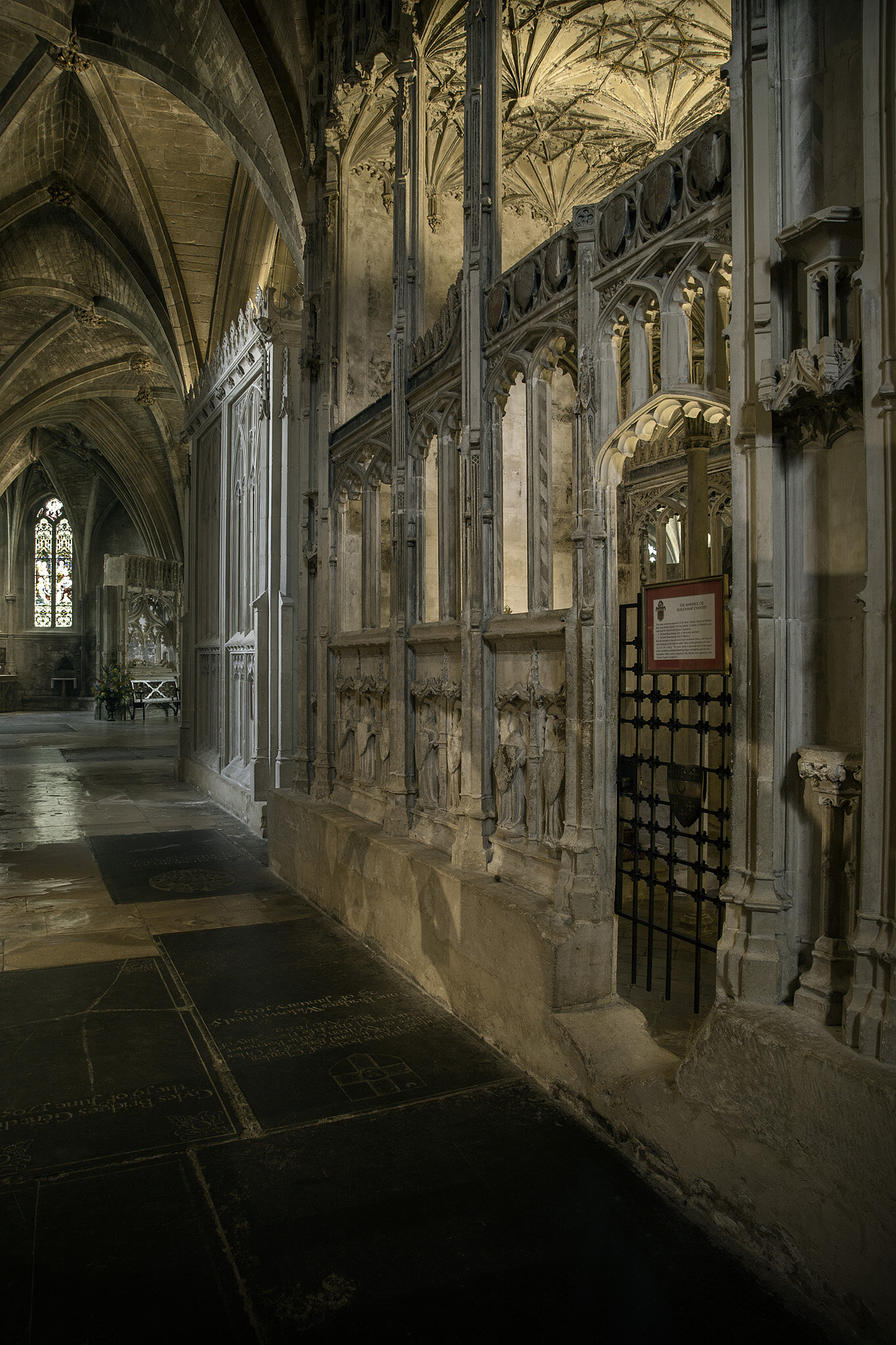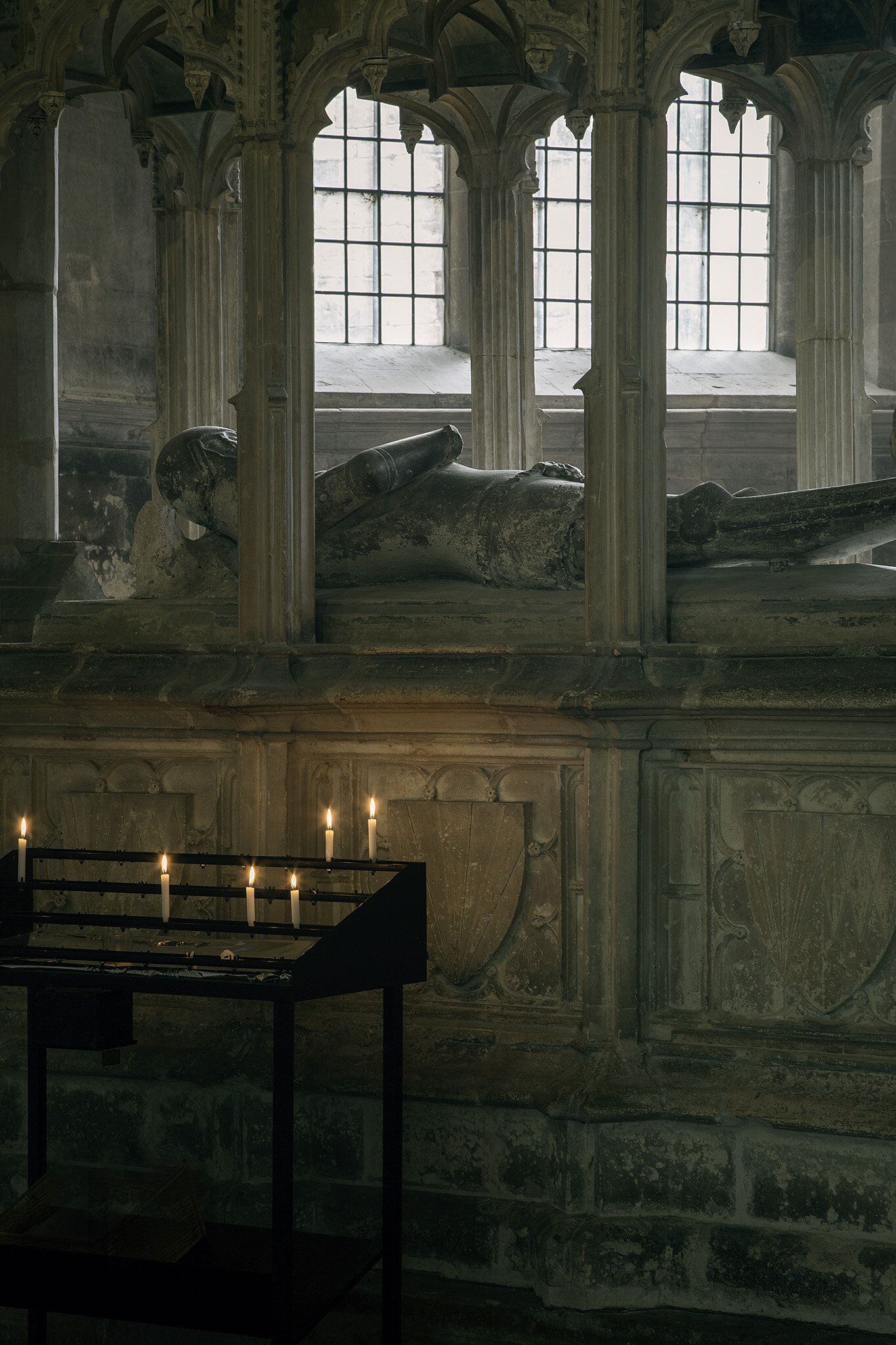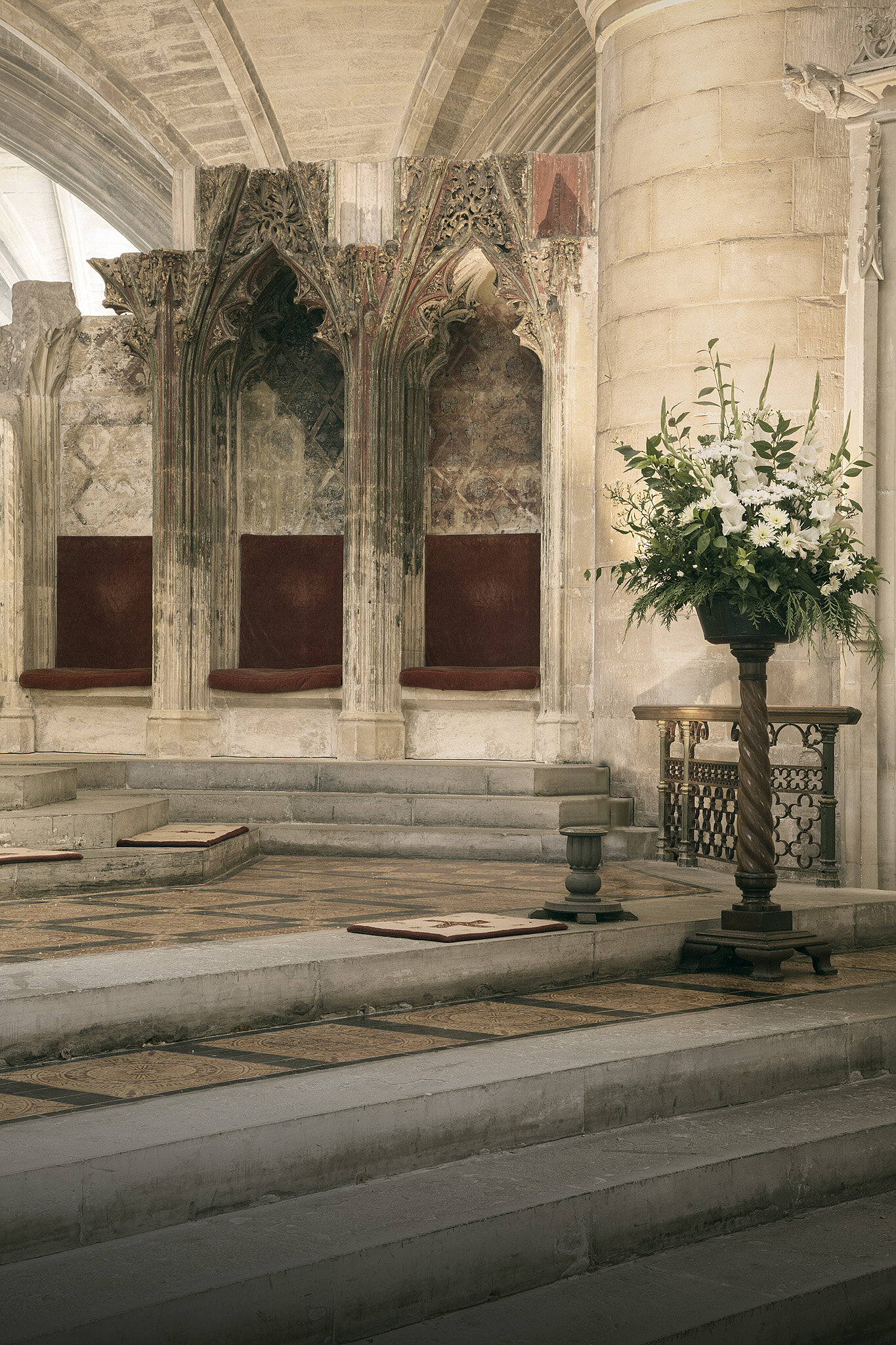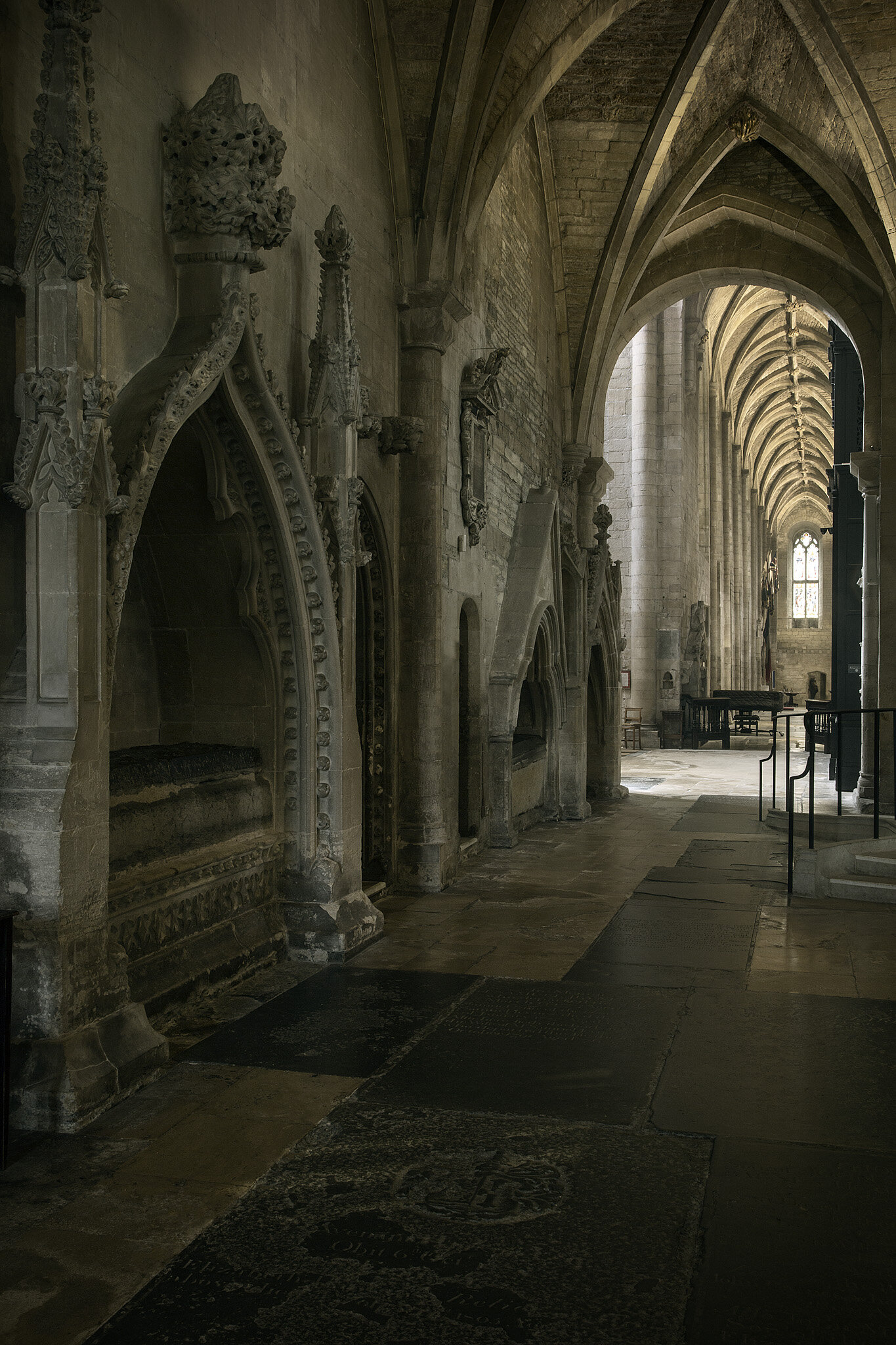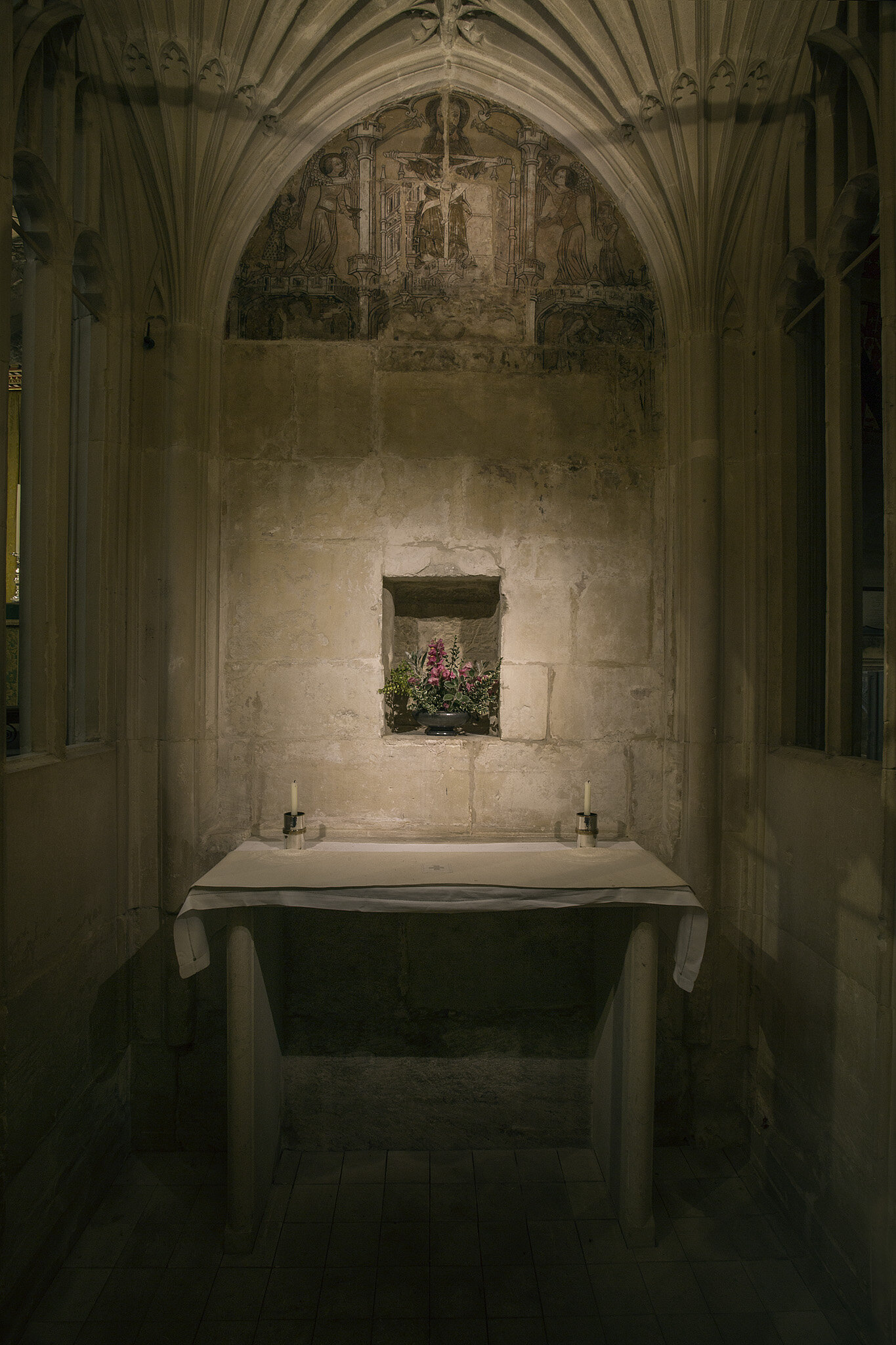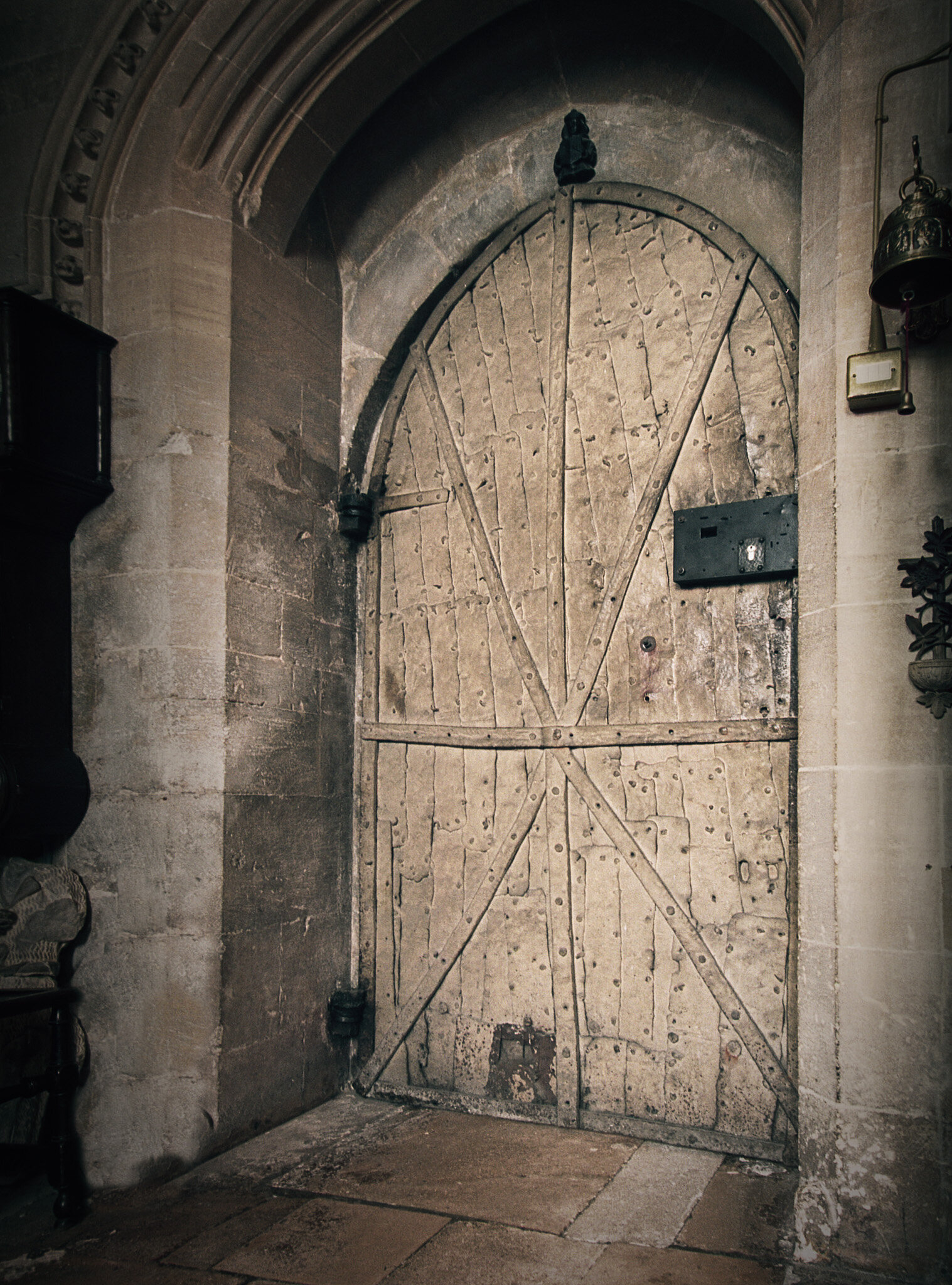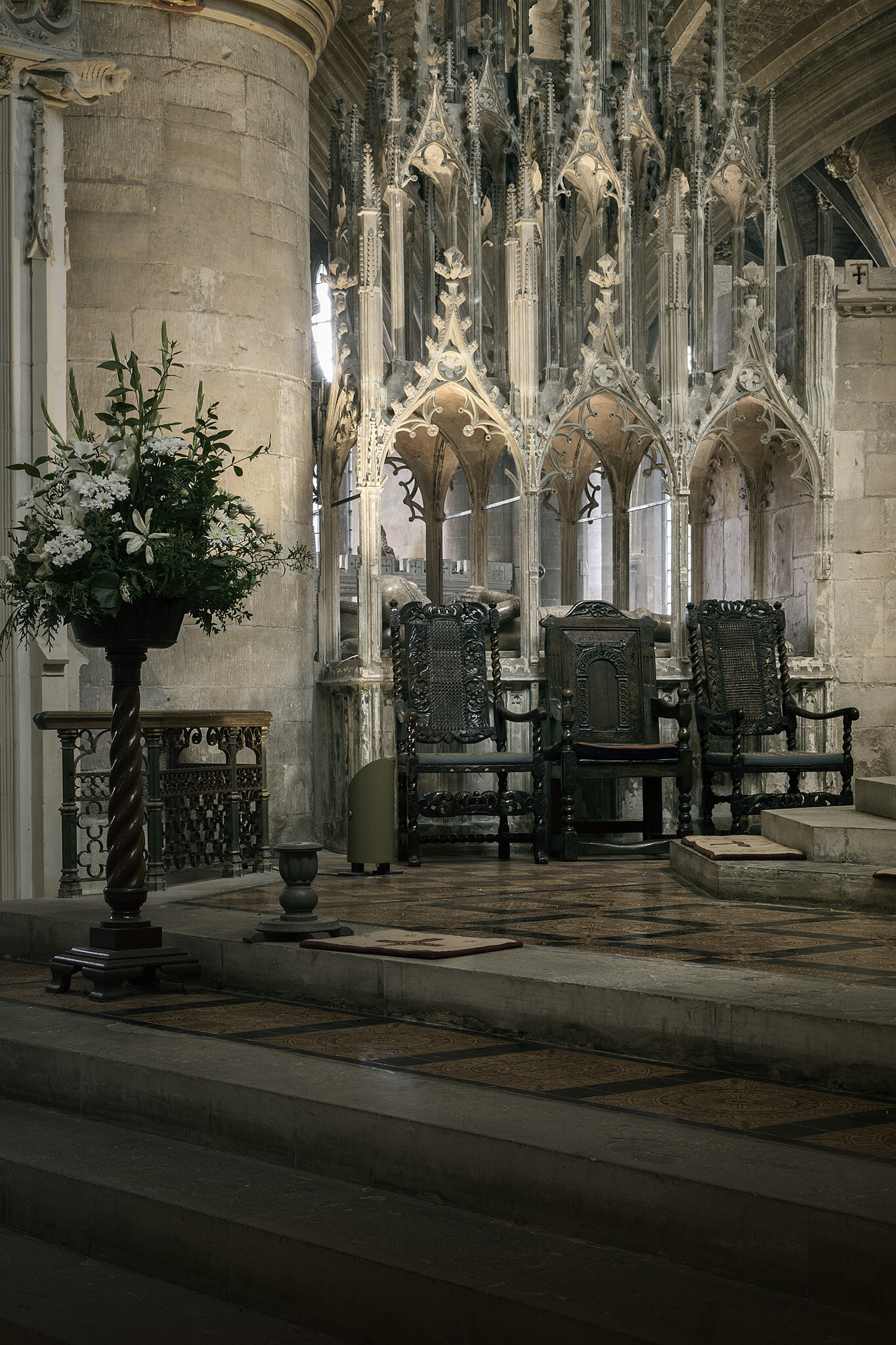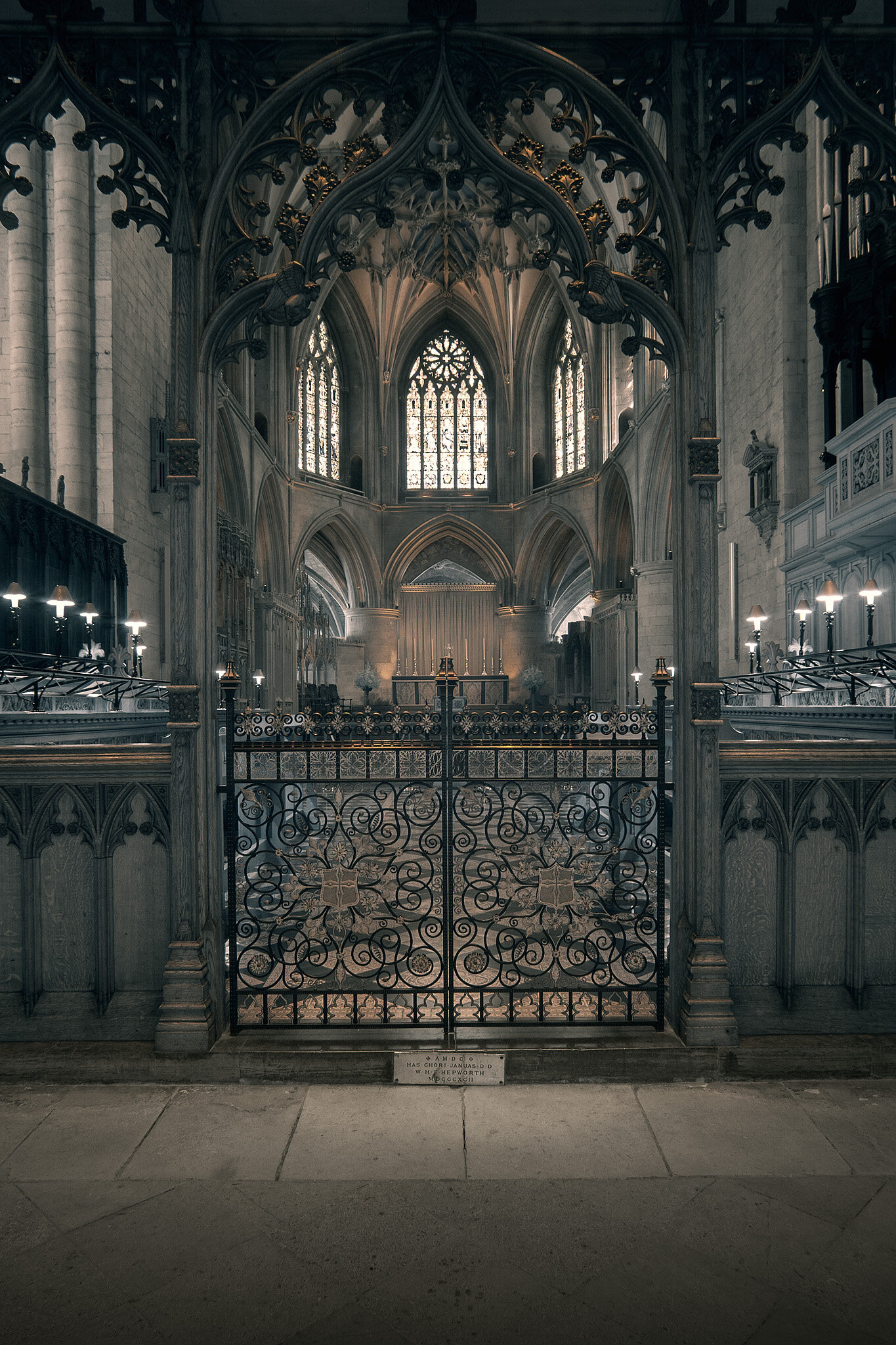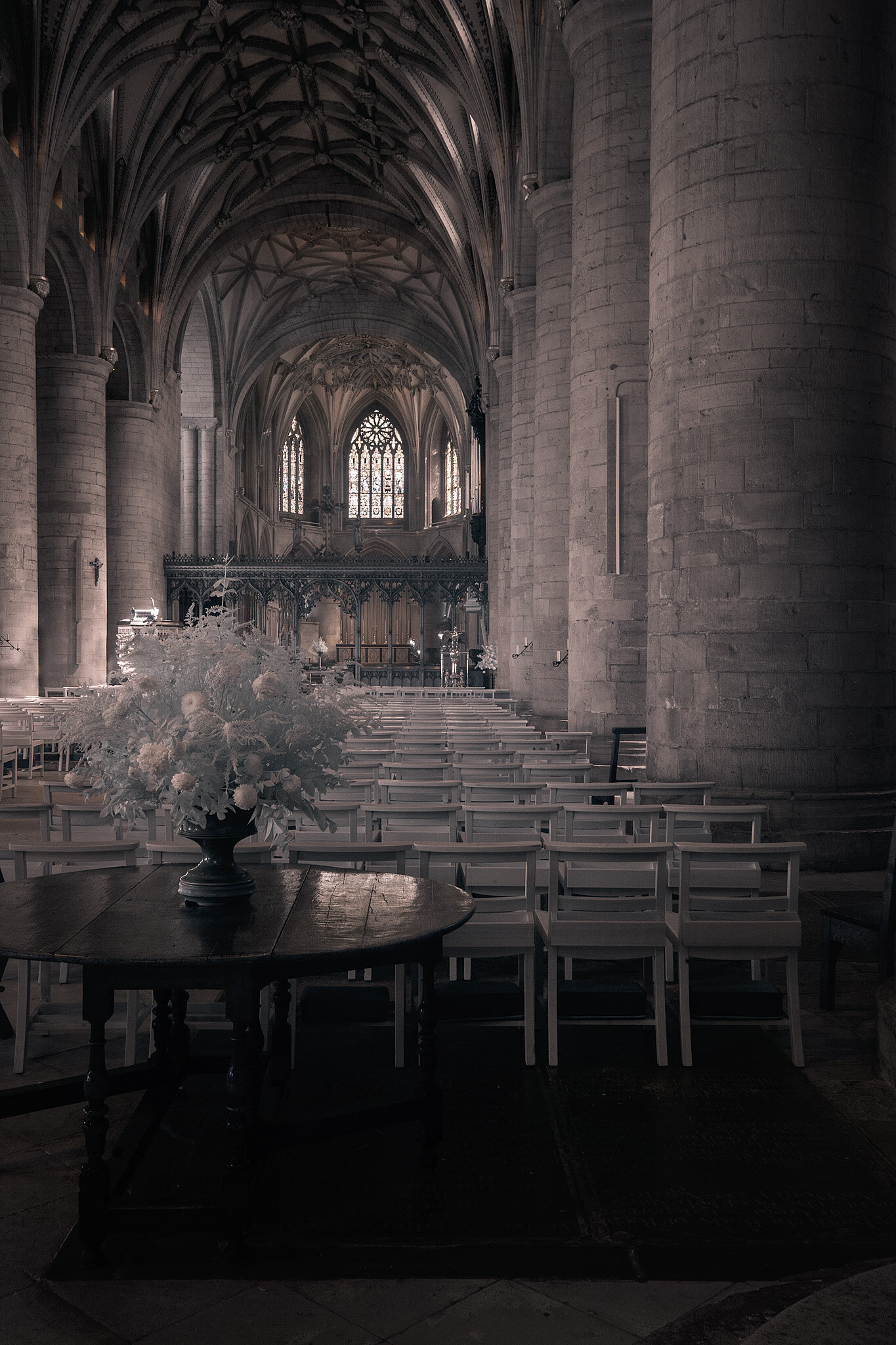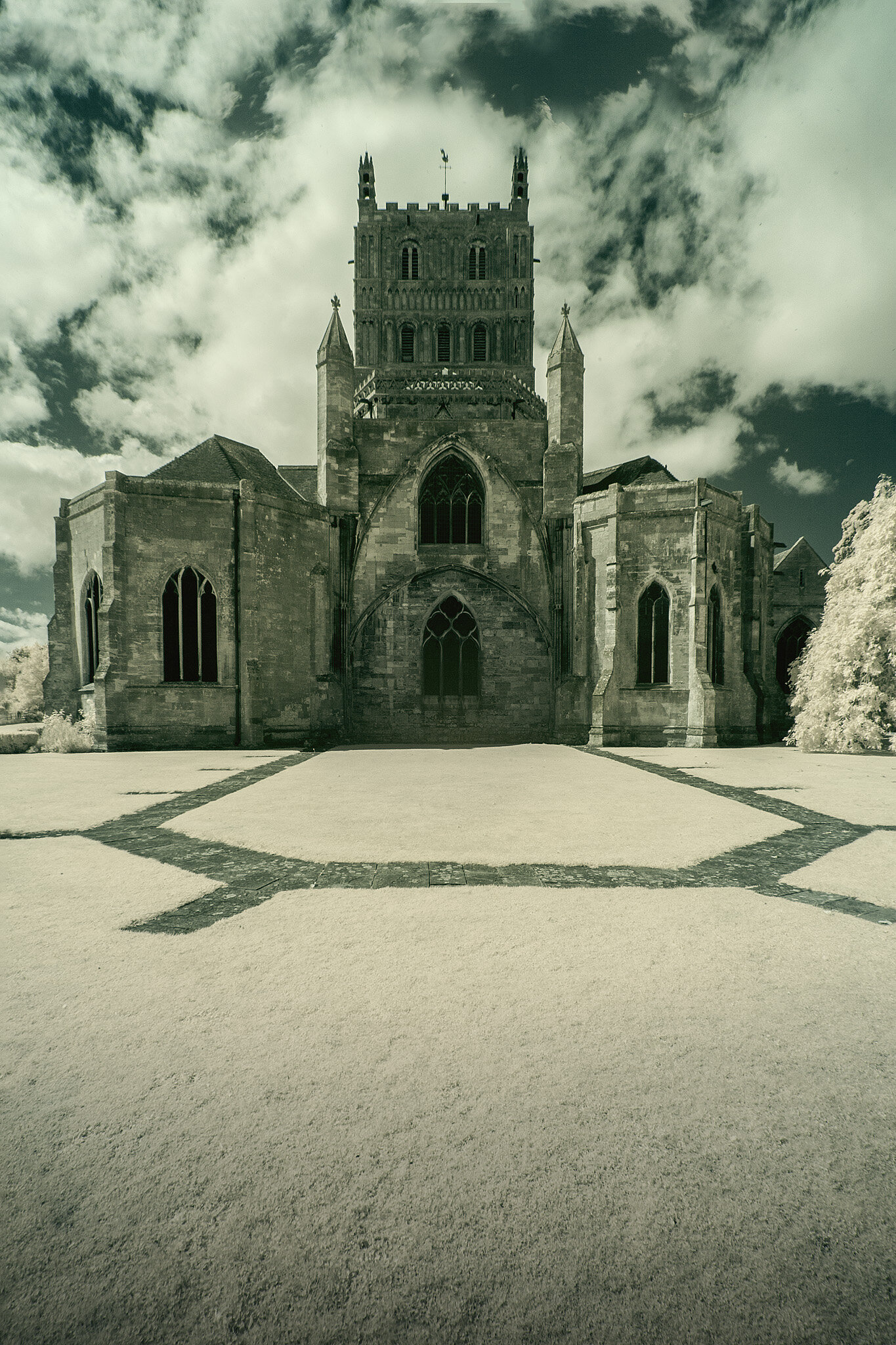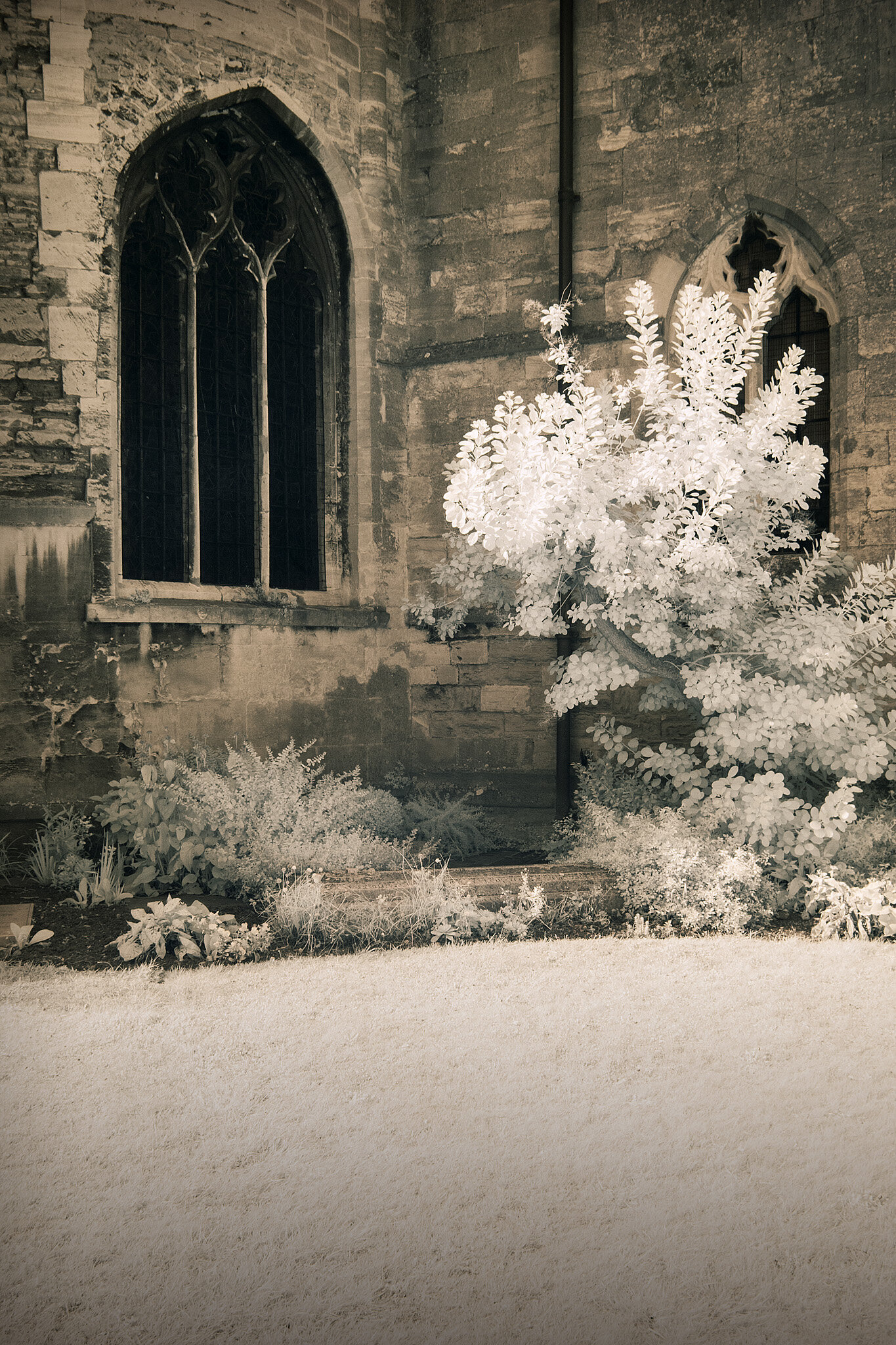Tewkesbury Abbey, South West England
It is said that a monastery was established at Tewkesbury by Benedictine monks in 715, thought to have been founded by the Mercian Dukes Oddo and Doddo. In 802, King Beorhtric of Wessex is supposed to have been buried here. It is unknown if either of these legends are true. What we do know is that the Danish raids affected Tewkesbury, and many other monastic communities, and that by the time of the Norman Conquest, the monastery that existed at Tewkesbury was in decline.
William Rufus granted the lands at Tewkesbury to Robert Fitz-Hamon, who had come to England with William the Conqueror. Fitz-Hamon brought Giraldus, the Abbot of Cranborne, to Tewkesbury and the present Abbey was founded, with Giraldus becoming its first Abbot at the end of the 11th Century. Robert Fitz-Hamon died in 1107, after being wounded at the siege of Falaise and his body was buried in the Chapter House of Tewkesbury Abbey.
After Fitz-Hamon’s death, the building work was continued by his son-in-law Robert Fitzroy, who was the illegitimate son of King Henry I. He saw the work through to completion and the church was consecrated in 1121. FitzRoy’s heir died without male issue, and the lands at Tewkesbury reverted to the Crown. Henry II held onto the lands, but Richard I granted them to his brother John, who lived at the castle at Tewkesbury until he became King. King John granted the lands to Gilbert de la Clare, who was the great grandson of Robert Fitz Roy. The de la Clares, along with the Despensers and Beauchamps, were the great families who supported, extended and rebuilt the Abbey. Many of their family members are buried here.
Gilbert de la Clare was one of the Barons who sealed Magna Carta at Runnymede, he died in France in 1230. His son, Richard, was a crusader and the father of Gilbert, the ‘Red Earl’, whose wife was the daughter of Edward I. Their son, also a Gilbert, died on the field at Bannockburn but, keeping it in the family, King Robert the Bruce of Scotland, who’s wife was Gilbert’s sister, allowed his body to be carried back to Tewkesbury, where he was buried before the altar.
Upon the death of Gilbert de la Clare at Bannockburn, the lands at Tewkesbury were inherited by his eldest sister Eleanor. Eleanor married Hugh Despenser, who became the favourite of King Edward II. Despenser’s influence on the King, led to his execution by rebellious Barons, at Hereford in 1326. After Despenser’s death, his wife Eleanor, along with their son Hugh, supported the Abbey at Tewkesbury so that the vaulted roof and its seven windows could be finished. Lord Hugh fought at Crecy, and died in 1349, he is buried in the Abbey church at Tewkesbury.
The male Despenser line came to an end, when Hugh’s grandson, Thomas, was executed by Henry Bolingbroke’s (later Henry IV) army in 1400, while Thomas was supporting King Richard II. The lands were then inherited by his sister Isabella, who married Richard Beauchamp, who later became the Earl of Worcester. They were married in the Abbey church at Tewkesbury. Richard Beauchamp died fighting in France in 1422, and it was to his memory that Lady Isabella erected the Warwick Chapel in the Abbey church. They had no issue, but Isabella married again and chose another Richard Beauchamp, this one was the Earl of Warwick, who was regent of France and died in 1439. Their son Henry died without issue.
The ‘Honour of Tewkesbury’ was then inherited by Isabella’s daughter Anne, who married Richard Neville, the Earl of Salisbury and it was through this marriage that he became Earl of Warwick. He has since come to be known in history as, the ‘King Maker’.
The peace at Tewkesbury was abruptly shattered when, during the Wars of the Roses, an army was at their door. So many events took place to lead to that moment. The Earl of Warwick made a deal with Queen Margaret of Anjou, that he would put Henry VI back on the throne, and his daughter Anne would marry her son Edward, who would become King. This of course meant deposing Edward IV. The weather had kept the Queen's army from sailing to England, and Warwick met Edward IV’s army at Barnet without them, where he lost his life. Queen Margaret landed in England the next day. With Warwick dead, she headed for Wales where she could call on support, but this meant the need to cross the river Severn. The nearest crossing was at Gloucester, however, Gloucester held out for Edward IV, forcing her to march to Tewkesbury, where there was another crossing. Edward IV had an army in pursuit and caught up to the Queen’s army at Tewkesbury.
On the morning of the 4th of May 1471, a battle commenced with Englishmen fighting Englishmen. The Queen’s army fled the field, and ran for the Abbey church hoping for sanctuary, with Edward IV’s men in pursuit. Abbot Strensham was saying Mass at the high altar and came down the length of the church when he saw the commotion. Holding the Holy Sacrament in his hand, he confronted the King’s men and demanded that the slaughter should cease. The King agreed to call off his men, if the leaders of the Queen’s army surrendered. It is not known how Queen Margaret’s son Prince Edward, died, whether it was on the battlefield, or after the battle, but he died at Tewkesbury and is buried in the church.
After the battle, the monks from the Abbey cleaned up the area around the battlefield. The back of the sacristy door, in the Abbey church, is reinforced with strips of metal, legend tells us that these strips are the remains of armour that was found on the field. As the door and the metal exist, this story is likely to be true. The door is hard to see, as it is kept locked. To see it, you must ask permission and be taken there by a staff member.
The Earl of Warwick's daughter, Isabella, inherited the lands at Tewkesbury upon her father, the ‘King Maker’s’, death. She was married to Edward IV’s brother, George, Duke of Clarence. Five years later, Lady Isabella died in childbirth, and was buried at the Abbey church at Tewkesbury.
George, Duke of Clarence, was the brother of Edward IV. Until Edward had a son, George was the Heir Presumptive. He sided with his Father-in-law, the Earl of Warwick, against his brother in 1470, but changed sides again and was welcomed back by Edward IV. After his wife Isabella died, Clarence was accused of conspiracy against King Edward IV and was taken to the Tower, where he was held, tried, and found guilty of Treason. He was executed in the Tower, supposedly by drowning in a cask of Malmsey wine, however there is no proof of this. His body was taken to Tewkesbury for burial, where he was buried with his wife. They lie in a vault behind the high altar.
After the Dissolution of the Monasteries, the people of Tewkesbury, who had been using the nave of the Abbey church, approached the King's commissioners and petitioned for permission to purchase the whole of the church, for their use, as a parish church. The king charged them the value of the metal in the bells and the lead of the roof, which it was decided would be £453, a fortune at the time. However the town’s people raised this within two years, and it is down to them that the Abbey church still stands today.
Our view of Tewkesbury today, is very different from what medieval people saw. The Abbey church, while in the centre of Tewkesbury, would have been surrounded by buildings which have long ago vanished. This was once a working Abbey, with all of the structures that come with a working monastery. The church interior too is different. The colours have gone from the walls, which were once vividly painted with biblical scenes. The same is true for the pillars and arches, which would have been boldly patterned. Their colours have also vanished, with only a few traces of what they once were.


